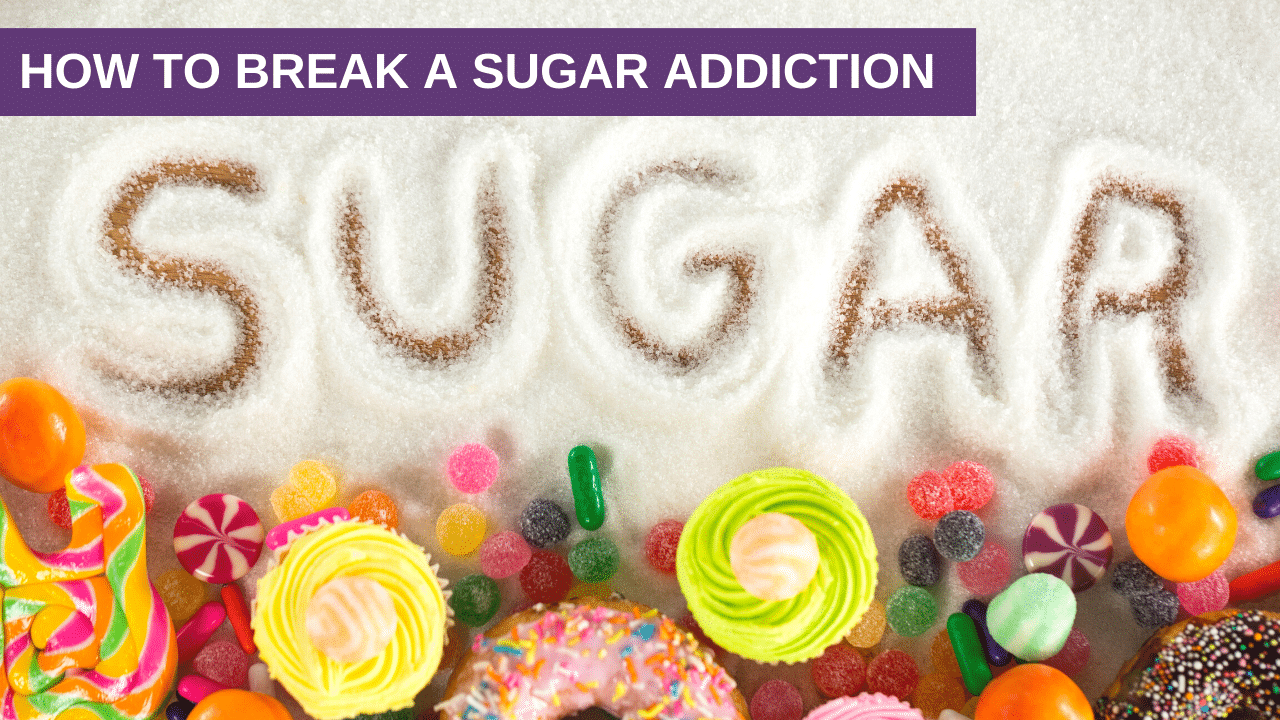What are some effective ways to break a sugar addiction? Let’s talk about it
Approximately 75% of Americans eat excess amount of sugar. Sugar is a substance that stimulates the release of opioids and dopamine and has addictive potential. Dopamine is your pleasure neurotransmitter. It’s the hormone in your brain that increases to reward you. Addictive behaviors increase dopamine levels. Withdrawal symptoms from sugar come from dopamine deficiency in the brain.
When your brain chemistry is out of balance, especially low in serotonin, you tend to crave sugar. Sugar in the form of alcohol, in the form of sweets, candies, baked goods, and even in the form of white flour and breads, which gets turned into sugar quickly.
Energy from sugar should make up only 5% of your calories – but most people consume four times that amount. Consuming excess sugar can wreak havoc on your health leading to obesity and diabetes, as well as metabolic syndrome.
For my patients with sugar addictions, I recommend:
#1 Supporting the Hypothalamus
Your hypothalamus controls dopamine production. And hypothalamic dysfunction has been associated with addictive behaviors. Supporting your hypothalamus with Genesis Gold® and extra Sacred Seven® amino acids helps to calm the sugar cravings and rebalances brain chemistry.
Naturally increasing dopamine with Genesis Gold® and Sacred Seven® helps your hypothalamus provide your brain with what you need to quell your addiction. That means you’re not reaching for sugar to raise your dopamine levels.
#2 Do a Liver Cleanse
I start my sugar-addicted patients with a dietary liver cleanse. It’s only for three days but can go up to seven days. My complete liver cleanse diet is available in my Hormone Reboot Training. When you’ve been binging on sugar your liver packages the extra sugar you do not use for energy into triglycerides which are three sugars attached to a fat molecule. Your liver stores these triglycerides and can become fatty. A fatty liver does not detox properly. Following a liver cleanse diet 3 days a month can help clear toxins and fat deposits on your liver.
#3 Follow an Insulin Resistance Diet
After cleansing their liver, I have my sugar-addicted patients try to follow my insulin-resistant diet. The liver cleanse has little fat and no protein so the insulin-resistant diet feels a little like a splurge since it’s rich in protein and healthy fats just low in carbohydrates. The goal is to avoid all starchy carbs and absolutely no high glycemic index carbs that turn into sugar quickly and trigger the addiction.
My insulin-resistant diet is a form of abstinence that can last 6-8 weeks, longer if needed and tolerated. Some patients are able to follow the insulin resistance diet five days a week with two days off – experimenting with carbs like fruits and whole grains to see what foods triggers their sugar addiction. This modified nutritional plan helps you learn to control your addictions.
#4 Avoid Artificial Sweeteners
Artificial sweeteners increase insulin levels just like sugar does. And that’s going to make your body look for more sugar and you’ll never be satisfied. In fact, it’s been found that people who consume artificial sweeteners. actually consume more calories making up for the sugar that their tongues noted but they really didn’t get with the artificial sweetener. Use natural no calorie sweeteners like stevia or monk fruit but be sure to eat a small amount of low glycemic index carbohydrates with it in order for your body to feel satisfied.
#5 Deal with the Emotional Aspect of Sugar Addictions
Most addictive behaviors form as coping mechanisms to deal with emotions. Unexpressed negative emotions can be at the root of addictions including sugar addictions. Starting with professional psychological therapy can help you identify and express your emotions safely and help you learn healthier coping mechanisms.
Once your emotions are clear, you can start desensitizing yourself to your trigger foods. I recommend to my patients to make a ritual of eating their trigger foods with nice music, fine dishes, tablecloths, candles, to establish a calm setting. Be very intentional, no hiding with this food. You’re just sitting down and enjoying it like anyone else. Over time, you start to neutralize the trigger food so you gain back control.
Getting over sugar addictions takes time but with hypothalamus support, healing nutrition, and therapy you can beat addictions.
If you have any questions about breaking your sugar addiction, please join me in our Hormone Support Group where I answer your questions live. You can access it by signing up for my free Hormone Reboot Training.



0 Comments